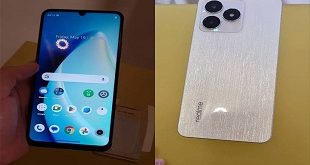Introduction
The world of technology is constantly evolving, and one of the most exciting recent developments has been the advent of foldable smartphones. These innovative devices, which can transform from a conventional smartphone into a tablet-like form factor, are pushing the boundaries of mobile technology. In this article, we will explore the emergence of foldable smartphones, their history, current state, potential applications, and the impact they are poised to have on the future of mobile devices.
The Evolution of Foldable Smartphones
The concept of foldable or flexible display technology has been a topic of discussion among tech enthusiasts and manufacturers for years. However, it wasn’t until recent advancements in materials and manufacturing techniques that foldable smartphones became a reality.
Early Concepts and Prototypes
The idea of a foldable smartphone can be traced back to science fiction and concept designs. Visionary thinkers imagined devices that could expand to provide a larger screen when needed and fold up to fit comfortably in a pocket. These early concepts were inspirational but lacked practical implementation.
The Arrival of Bendable Displays
The breakthrough that made foldable smartphones possible was the development of bendable display technology. Manufacturers began to experiment with flexible OLED (Organic Light Emitting Diode) screens that could be bent without damaging the display or losing image quality. Samsung, a leader in the smartphone industry, played a significant role in advancing this technology.
Samsung’s Pioneering Role
Samsung unveiled its first foldable smartphone, the Samsung Galaxy Fold, in 2019. This device featured a foldable display that allowed it to function as a compact smartphone or expand into a larger tablet-like screen. The release of the Galaxy Fold marked a significant milestone in the smartphone industry, sparking interest and competition in the field of foldable devices.
Current State of Foldable Smartphones
Fast forward to the present, and the world of foldable smartphones has expanded with several manufacturers entering the market. Some of the notable players in this emerging industry include Samsung, Huawei, Motorola, and Xiaomi. These companies have released various foldable models, each with its unique features and design.
Key Features and Variations
Foldable smartphones come in different designs and configurations. Some common features and variations include:
- Inward and Outward Folding: Foldable smartphones can fold inwards or outwards, depending on the design. Inward-folding devices protect the display when closed, while outward-folding models offer a larger screen area.
- Tablet-to-Smartphone Mode: These devices can switch between a tablet mode with an expansive screen and a smartphone mode with a compact form factor, allowing users to adapt to their specific needs.
- Multi-Tasking Capabilities: Foldable smartphones often support multi-tasking features, making it easier to work with multiple apps simultaneously on the larger display.
- Stylus Support: Some models offer stylus support, enhancing productivity and creativity for users who need precise input.
- Durability Enhancements: Manufacturers are continuously improving the durability of foldable displays to withstand repeated folding and unfolding. Materials like ultra-thin glass are being used to protect the screen.
- Price Range: Foldable smartphones vary in price, with high-end models offering advanced features and capabilities. As the technology matures, more affordable options are expected to enter the market.
Applications of Foldable Smartphones
Foldable smartphones have the potential to revolutionize the way we use mobile devices. Their unique form factor and features open up a range of applications and use cases:
- Enhanced Productivity: The larger screen size in tablet mode is ideal for productivity tasks, such as document editing, multitasking, and creative work.
- Multimedia Consumption: Watching videos, browsing the web, and gaming are more immersive on a larger foldable display.
- E-Reading: Reading e-books, magazines, and digital newspapers becomes more comfortable with the expanded screen real estate.
- Creativity and Design: Artists and designers can use stylus-equipped foldable devices for sketching, drawing, and graphic design.
- Video Conferencing: Video calls and conferencing benefit from the larger screen, making it easier to interact with colleagues, friends, and family.
- On-the-Go Entertainment: Foldable smartphones are more portable than traditional tablets, offering an excellent balance between portability and screen size for entertainment on the move.
Challenges and Considerations
While foldable smartphones hold immense promise, they also face several challenges and considerations:
- Durability: Ensuring that foldable screens remain durable and resistant to wear and tear is a significant engineering challenge.
- Price: High-quality foldable smartphones are currently relatively expensive, limiting their accessibility to a broader consumer base.
- Software Optimization: App developers need to optimize their applications for foldable displays to maximize user experience.
- Weight and Thickness: Foldable smartphones may be thicker and heavier than traditional smartphones, which can impact user comfort and portability.
- Battery Life: The larger screens and more complex configurations can put a strain on battery life, necessitating efficient power management.
The Future of Foldable Smartphones
The future of foldable smartphones holds tremendous potential for innovation and transformation:
- Improved Durability: Continued advancements in materials and engineering will lead to even more robust and durable foldable displays.
- Affordability: As the technology matures and economies of scale kick in, foldable smartphones are likely to become more affordable.
- Software Integration: App developers will adapt and optimize their software for foldable displays, providing enhanced user experiences.
- Market Expansion: More manufacturers will enter the foldable smartphone market, offering a broader range of options to consumers.
- Enterprise Adoption: Foldable devices could gain traction in the business world, especially for professionals who require enhanced productivity on the go.
- Innovation Beyond Smartphones: Foldable technology might extend to other devices, such as tablets, laptops, and wearables.
Conclusion
Foldable smartphones represent a significant step forward in mobile technology, offering users the versatility of a compact smartphone and the convenience of a tablet in a single device. While challenges like durability and affordability persist, ongoing innovation and market competition are likely to address these issues. As we move further into the foldable smartphone era, these devices have the potential to transform the way we work, play, and interact with our digital world. With each new release and technological advancement, the unfolding future of foldable smartphones becomes increasingly exciting and promising.


